Lübeck tourism offers a captivating blend of history, culture, and charm, making it a must-visit destination in Germany, and SIXT.VN can help make your trip seamless with our range of travel services tailored for exploring unique destinations. Discover medieval architecture, delightful marzipan, and hidden alleyways that promise an unforgettable travel experience, enriched by local insights and personalized service. Contact SIXT.VN for travel packages, airport transfers, and curated tours!
1. What Makes Lübeck a Unique Tourist Destination?
Lübeck stands out as a unique tourist destination due to its well-preserved medieval architecture, status as a UNESCO World Heritage site, and its renowned marzipan production. This combination offers visitors a rich cultural experience with historical depth and culinary delights. According to UNESCO, Lübeck’s Old Town is an “outstanding example of a medieval city” showcasing Hanseatic architecture from the 12th to 16th centuries. The city’s unique charm is further enhanced by its intricate network of narrow streets and historic buildings, providing a picturesque backdrop for tourists eager to explore its rich history and culture.
What is the historical significance of Lübeck?
Lübeck’s historical significance lies in its role as the “Queen of the Hanseatic League,” a powerful medieval trading network that dominated the Baltic Sea region. Its well-preserved medieval architecture reflects its importance as a center of trade and power. According to the Lübeck Convention Bureau, the city’s historic role significantly shaped its urban landscape, which features notable structures such as the Holsten Gate and the Lübeck Cathedral, all testaments to its rich past.
How does Lübeck’s architecture enhance its appeal?
Lübeck’s architecture significantly enhances its appeal by showcasing a blend of Gothic, Renaissance, and Baroque styles within its medieval framework, creating a visually stunning and historically rich environment. This blend of architectural styles provides a tangible link to different periods of European history, making it an attractive destination for history enthusiasts and architecture lovers alike. The intricate details and well-preserved state of buildings like the Holsten Gate, Marienkirche (St. Mary’s Church), and the historic warehouses along the Trave River enhance the city’s picturesque charm.
What role does marzipan play in Lübeck’s tourism?
Marzipan plays a significant role in Lübeck’s tourism by attracting visitors with its unique culinary heritage, offering tours, tastings, and historical insights into its production at the Niederegger Marzipan Museum. The Niederegger company, established in Lübeck in 1806, is central to this attraction, as noted by the German National Tourist Board. This marzipan heritage contributes significantly to Lübeck’s cultural identity, drawing food enthusiasts and tourists seeking unique culinary experiences.
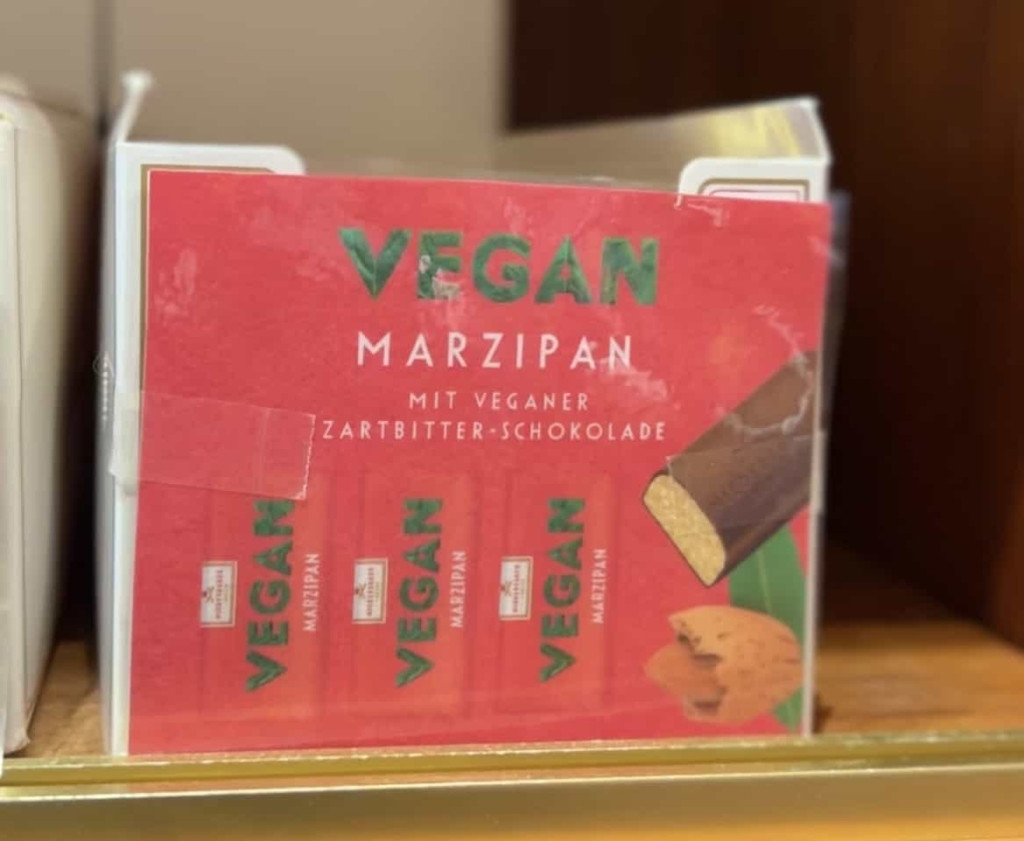 Marzipan in Lubeck is world famous
Marzipan in Lubeck is world famous
2. What are the Must-See Attractions in Lübeck?
Must-see attractions in Lübeck include the Holsten Gate, Marienkirche (St. Mary’s Church), Lübeck Cathedral, and the historic Speicherstadt (warehouse district). These sites offer a comprehensive look at the city’s rich history, architectural beauty, and cultural heritage. According to Visit Lübeck, these landmarks are essential for understanding Lübeck’s historical significance and architectural grandeur.
Why is the Holsten Gate a key landmark?
The Holsten Gate is a key landmark because it symbolizes Lübeck’s historical power and serves as an iconic representation of the city’s medieval fortifications. Built in 1464, it originally functioned as one of four city gates. Its distinctive twin towers and the inscription “Concordia domi foris pax” (harmony at home, peace abroad) reflect Lübeck’s historical importance as a center of trade and diplomacy. Today, it houses a museum showcasing Lübeck’s history.
What is special about Marienkirche (St. Mary’s Church)?
Marienkirche (St. Mary’s Church) is special because it is a prime example of North German Brick Gothic architecture and served as a model for many churches in the Baltic Sea region. Its towering vaults, astronomical clock, and the poignant remains of the bells destroyed during World War II make it a significant cultural and historical site. The church’s architectural grandeur and historical artifacts provide visitors with a deep appreciation of medieval religious architecture and the impact of historical events.
What can visitors experience at Lübeck Cathedral?
At Lübeck Cathedral, visitors can experience a rich blend of Romanesque and Gothic architectural styles, along with significant historical and religious artifacts. Originally founded in 1173 by Henry the Lion, the cathedral has undergone numerous transformations, reflecting various periods of architectural innovation. Visitors can explore its chapels, admire the triumphal cross by Bernt Notke, and learn about its historical significance as a major religious center in Northern Europe.
Why visit the Speicherstadt (warehouse district) in Lübeck?
The Speicherstadt (warehouse district) in Lübeck is worth visiting because it showcases the city’s maritime history and its role as a major trading center in the Hanseatic League. The district’s historic warehouses, located along the Trave River, are examples of medieval storage architecture. Today, many of these warehouses have been converted into museums, galleries, and shops, offering visitors a glimpse into Lübeck’s past.
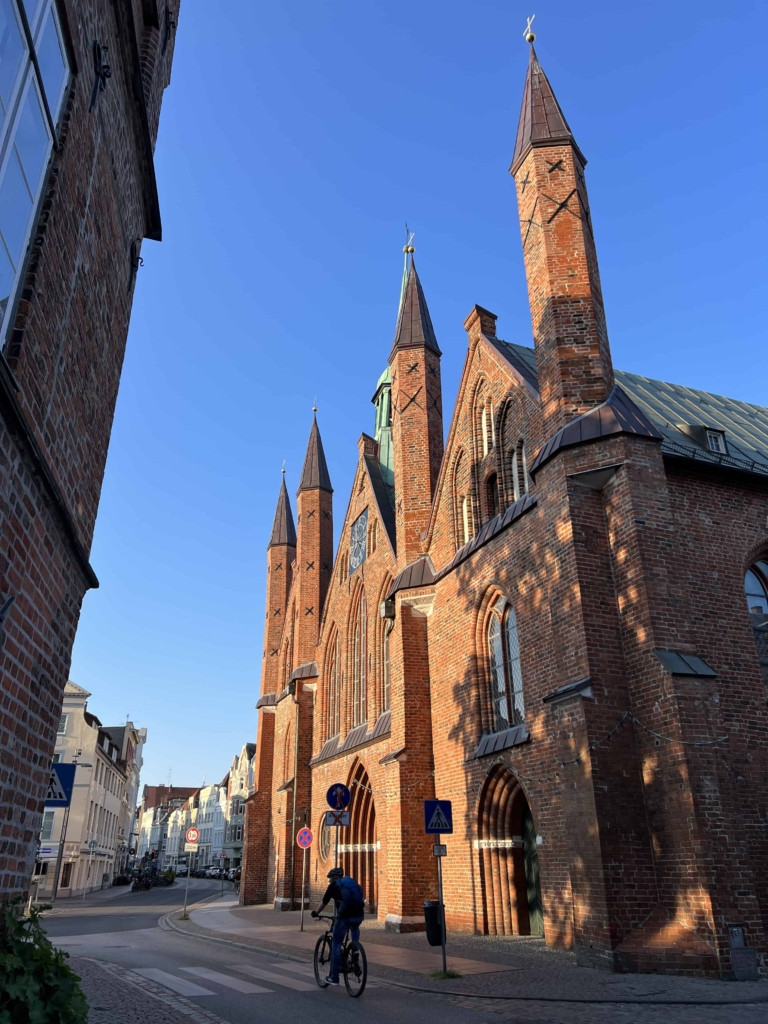 Lubeck Germany old building
Lubeck Germany old building
3. How Can You Experience Lübeck’s Culture?
To experience Lübeck’s culture, visit local museums, attend cultural festivals, explore the historic Buddenbrook House, and indulge in traditional marzipan. These activities provide insight into Lübeck’s literary heritage, artistic traditions, and culinary specialties. According to the Lübeck Convention Bureau, these experiences offer a comprehensive view of the city’s cultural landscape.
What museums offer insights into Lübeck’s history?
Several museums offer insights into Lübeck’s history, including the St. Anne’s Museum Quarter, the Holsten Gate Museum, and the Willy Brandt House Museum. These institutions provide detailed exhibitions and artifacts that illustrate different facets of Lübeck’s past. These museums offer an in-depth understanding of Lübeck’s historical evolution.
How do cultural festivals enrich your visit?
Cultural festivals enrich your visit by providing immersive experiences that highlight Lübeck’s artistic, musical, and culinary traditions. Events like the Schleswig-Holstein Music Festival, the Lübeck Wine Festival, and the HanseKulturFestival offer engaging performances, exhibitions, and culinary delights that reflect the city’s cultural vibrancy. These festivals provide opportunities to interact with local artists, musicians, and chefs, gaining a deeper appreciation of Lübeck’s cultural scene.
What is the significance of the Buddenbrook House?
The Buddenbrook House is significant because it is the literary home of Thomas Mann’s famous novel, “Buddenbrooks,” offering visitors a glimpse into the world of the Mann family and their portrayal of Lübeck society. The museum features exhibits related to the novel, the Mann family’s history, and the socio-cultural context of Lübeck in the 19th century. Visiting the Buddenbrook House provides a deeper understanding of Lübeck’s literary heritage and its influence on German literature.
What culinary experiences are unique to Lübeck?
Culinary experiences unique to Lübeck include tasting traditional marzipan, sampling local seafood, and exploring regional Hanseatic cuisine. Lübeck is renowned as the “Marzipan City,” and visitors can enjoy a variety of marzipan treats at Niederegger Marzipan Museum. Additionally, sampling fresh seafood from the Baltic Sea and trying dishes inspired by Hanseatic trade routes provides a taste of Lübeck’s culinary heritage.
4. Where Can You Find the Best Marzipan in Lübeck?
The best marzipan in Lübeck can be found at Niederegger Marzipan Museum and Café, known for its traditional recipes and high-quality ingredients, offering a range of marzipan products and historical insights into its production. Additionally, local confectioneries and markets offer various marzipan treats, providing diverse options for sampling this Lübeck specialty.
What makes Niederegger marzipan special?
Niederegger marzipan is special because of its traditional recipe, high-quality ingredients, and long-standing history dating back to 1806, providing an authentic taste of Lübeck’s culinary heritage. According to the Niederegger company, their marzipan is made with a higher almond content and less sugar than other brands, ensuring a rich and flavorful experience. The combination of quality ingredients, historical tradition, and careful craftsmanship makes Niederegger marzipan a beloved and sought-after treat.
Can you tour the Niederegger factory?
While a full factory tour isn’t typically available, the Niederegger Marzipan Museum offers an interactive experience that showcases the history and production of their renowned marzipan. Visitors can explore exhibits detailing the origins of marzipan, the company’s history, and the techniques used to create their products. Additionally, the attached café provides a tasting experience.
Are there vegan marzipan options in Lübeck?
Yes, there are vegan marzipan options in Lübeck, catering to various dietary preferences while still offering a taste of the city’s specialty. Some local shops and confectioneries offer vegan marzipan made without honey or other animal products. Additionally, the Niederegger Marzipan Museum offers clearly labeled vegan products, allowing visitors to enjoy this iconic treat.
What other marzipan-related products are available?
Other marzipan-related products available in Lübeck include marzipan chocolates, marzipan liqueurs, marzipan cakes, and marzipan ice cream, providing various ways to enjoy this almond confection. These products can be found at the Niederegger Marzipan Museum and Café, as well as local markets and confectioneries throughout Lübeck. These specialty items showcase the versatility of marzipan.
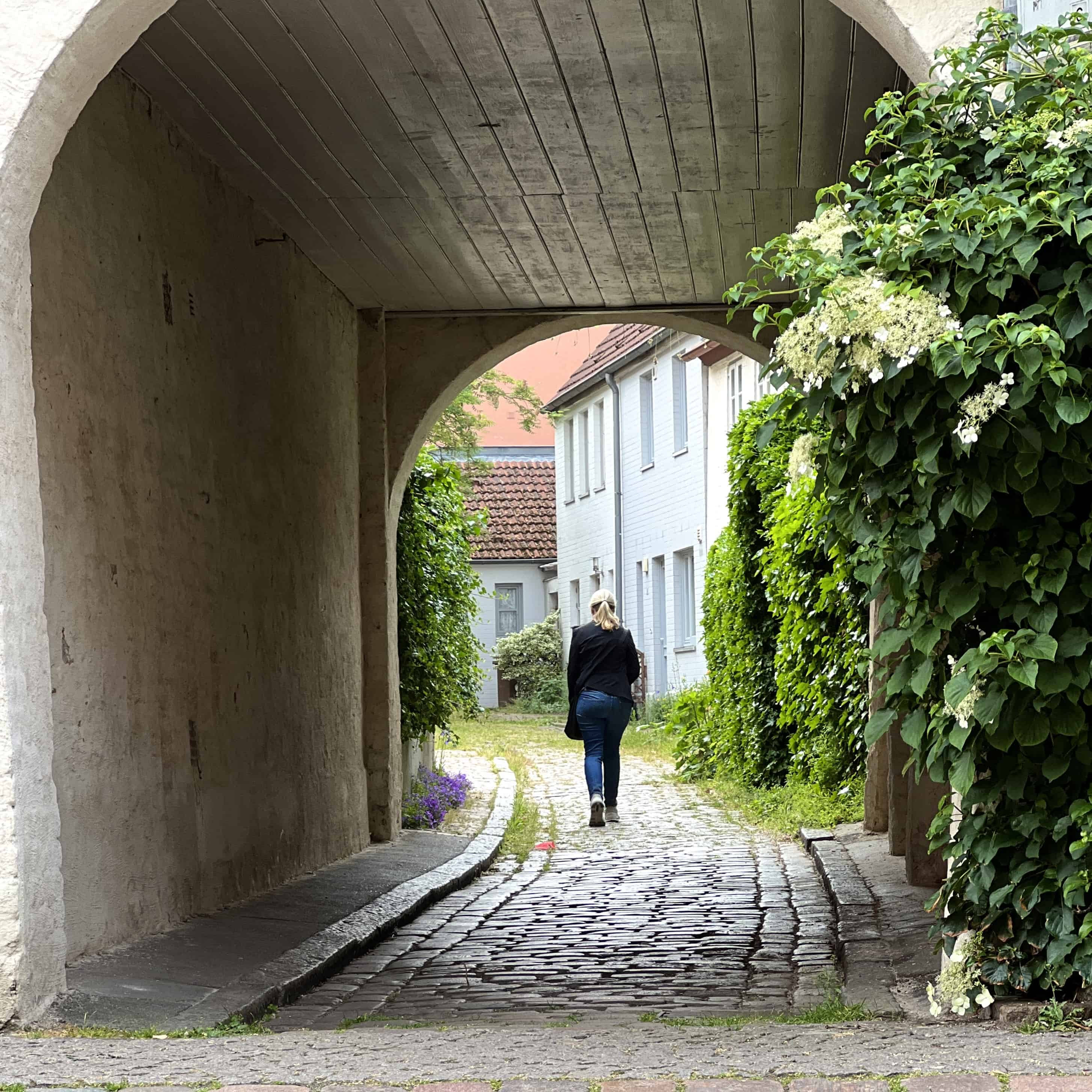 Lubeck city in Germany
Lubeck city in Germany
5. How to Explore Lübeck’s Hidden Alleys and Courtyards?
To explore Lübeck’s hidden alleys and courtyards, take a guided walking tour or wander independently through the Altstadt (Old Town), discovering the unique Gänge und Höfe (alleys and courtyards) that offer a glimpse into the city’s medieval past. These narrow passageways and secluded courtyards showcase the architectural ingenuity and communal living spaces of historic Lübeck.
What are Gänge und Höfe?
Gänge und Höfe are narrow alleys and hidden courtyards in Lübeck’s Old Town, originally built to provide housing for the city’s working class, offering a glimpse into the city’s medieval past. These alleyways and courtyards are interconnected, creating a network of pathways that reveal charming houses, gardens, and communal spaces. Exploring the Gänge und Höfe provides a unique perspective on Lübeck’s social history.
Are there guided tours of the alleys and courtyards?
Yes, there are guided tours of the alleys and courtyards, often provided by local tour operators and the Lübeck Tourist Information Center, offering insights into the history and architecture of these hidden spaces. These tours provide a comprehensive overview of the Gänge und Höfe, highlighting their historical significance, architectural features, and the stories of the people who lived there. A guided tour enhances the experience.
What can you expect to see in these hidden spaces?
In these hidden spaces, you can expect to see charmingly restored gabled houses, flower-filled courtyards, cobblestone pathways, and unique architectural details, reflecting Lübeck’s medieval heritage. These hidden spaces provide a serene and intimate atmosphere, offering a contrast to the bustling main streets. Visitors can admire the quaint homes, the well-maintained gardens, and the overall sense of tranquility.
How do the alleys and courtyards reflect Lübeck’s history?
The alleys and courtyards reflect Lübeck’s history by illustrating the city’s medieval urban planning and social structure, providing housing for workers and showcasing communal living spaces, demonstrating Lübeck’s historical development. Originally built to accommodate the growing population within the city walls, these spaces reflect the city’s adaptation to limited space and its commitment to providing housing for all its residents. These features make the alleys and courtyards essential to understanding Lübeck’s urban and social evolution.
6. What Day Trips Can You Take From Lübeck?
Day trips from Lübeck include visiting Hamburg, Schwerin, and Travemünde, offering diverse experiences from urban exploration to scenic coastal retreats. These destinations are easily accessible by train or car, providing convenient options for extending your Lübeck itinerary.
How far is Hamburg from Lübeck?
Hamburg is approximately 65 kilometers (40 miles) from Lübeck, making it an easily accessible day trip by train or car, offering urban exploration and cultural experiences. The train journey between Lübeck and Hamburg takes about 45 minutes to 1 hour, providing a quick and convenient way to explore both cities. The close proximity of Hamburg to Lübeck allows travelers to experience the vibrant urban atmosphere of Hamburg.
What attractions does Schwerin offer?
Schwerin offers attractions such as Schwerin Castle, Schwerin Lake, and the Mecklenburg State Theatre, providing cultural and scenic experiences within a historic setting. Schwerin Castle, located on an island in the Schwerin Lake, is a landmark known for its architecture and gardens. Visitors can explore the castle’s opulent interiors, stroll through the gardens, and enjoy views of the lake. Additionally, the Mecklenburg State Theatre offers performances.
Why visit Travemünde?
Travemünde is worth visiting for its sandy beaches, seaside promenade, and the historic Passat sailing ship, offering a relaxing coastal retreat and maritime experiences. As a popular Baltic Sea resort, Travemünde provides a refreshing contrast to Lübeck’s urban environment. Visitors can relax on the beach, take a walk along the promenade, and visit the Passat, a museum ship that offers insights into maritime history.
How accessible are these day trip locations?
These day trip locations are easily accessible by train and car, with regular connections from Lübeck, offering convenient transportation options for exploring the surrounding region. The German railway system provides frequent and efficient train services to Hamburg, Schwerin, and Travemünde, allowing visitors to travel comfortably. Additionally, the road network is well-maintained.
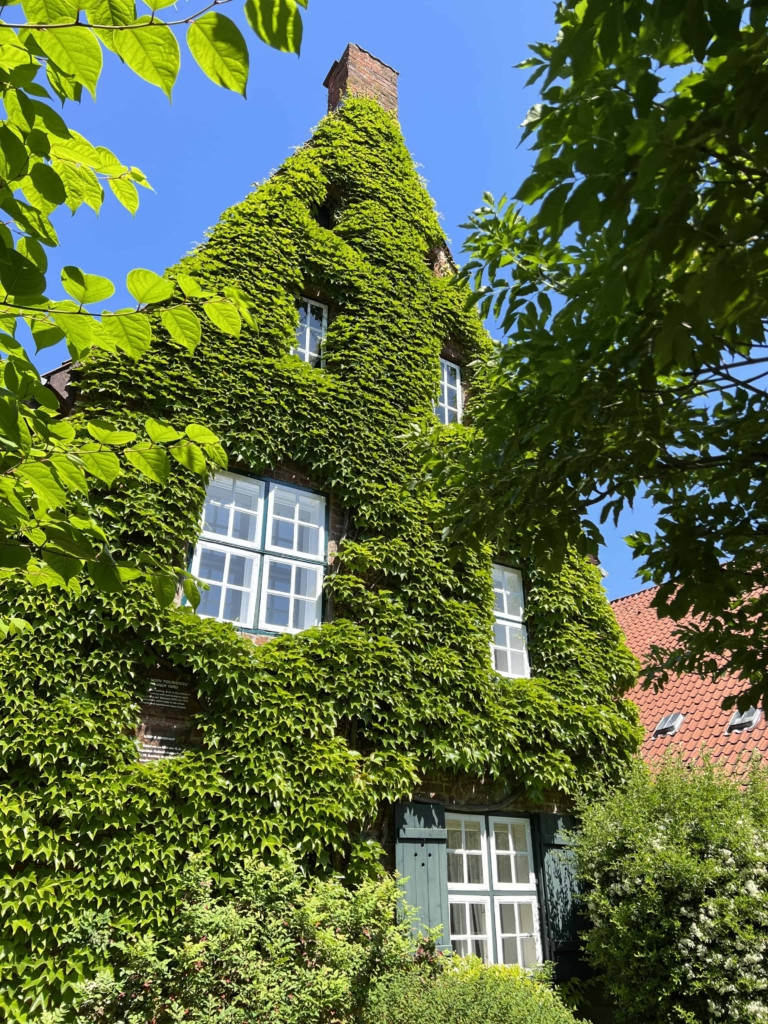 Architecture in Lubeck Germany
Architecture in Lubeck Germany
7. Where Can You Stay in Lübeck?
In Lübeck, you can stay in historic hotels in the Old Town, modern accommodations near the train station, or cozy guesthouses in residential areas, offering options for different preferences and budgets. According to Booking.com, Lübeck offers a range of accommodations that cater to different needs.
What are the benefits of staying in the Old Town?
Staying in the Old Town provides easy access to major attractions, historical sites, and cultural experiences, allowing you to explore Lübeck’s heritage on foot. The Old Town is home to landmarks such as the Holsten Gate, Marienkirche, and the Buddenbrook House, making it easy to immerse yourself in the city’s rich history. Additionally, the Old Town offers a variety of restaurants, cafes, and shops.
Are there hotels near Lübeck’s train station?
Yes, there are hotels near Lübeck’s train station, providing convenient access to transportation and making it easy to explore the city and surrounding areas. These hotels cater to travelers who value convenience. Staying near the train station can save time.
What types of guesthouses are available?
Available guesthouses range from family-run establishments to boutique accommodations, often offering a personal touch and local insights into Lübeck’s culture and attractions. These guesthouses provide a welcoming atmosphere and a more intimate experience. Many guesthouses are located in residential areas, offering a glimpse into local life.
How do you choose the best location for your needs?
To choose the best location for your needs, consider factors such as proximity to attractions, transportation options, budget, and personal preferences, ensuring a convenient and enjoyable stay in Lübeck. If you prioritize easy access to historical sites, staying in the Old Town is ideal. If you value convenient transportation links, choose a hotel near the train station. If you prefer a more tranquil environment, a guesthouse in a residential area may be more suitable.
8. What Events and Festivals Should You Attend in Lübeck?
Events and festivals to attend in Lübeck include the Schleswig-Holstein Music Festival, the HanseKulturFestival, and the Lübeck Christmas Market, offering cultural and seasonal experiences throughout the year. According to the Lübeck Convention Bureau, these events provide engaging ways to experience the city’s traditions and artistic scene.
What is the Schleswig-Holstein Music Festival?
The Schleswig-Holstein Music Festival is a renowned classical music festival that takes place throughout Schleswig-Holstein, including Lübeck, featuring performances by orchestras, soloists, and chamber ensembles. The festival, founded in 1986, aims to promote classical music and showcase talented musicians from around the world. The Schleswig-Holstein Music Festival enhances Lübeck’s cultural appeal.
What happens at the HanseKulturFestival?
The HanseKulturFestival celebrates the Hanseatic League’s history and cultural heritage with historical reenactments, craft markets, musical performances, and culinary offerings, providing an immersive cultural experience. This festival brings Lübeck’s history to life with reenactments of historical events, demonstrations of traditional crafts, and performances of period music. Visitors can also sample traditional Hanseatic cuisine and learn about the region’s cultural traditions.
When does the Lübeck Christmas Market take place?
The Lübeck Christmas Market takes place from late November to December, transforming the city into a festive wonderland with traditional crafts, food stalls, and seasonal activities, creating a magical holiday atmosphere. The market is known for its traditional crafts, including handmade ornaments, wooden toys, and artisanal gifts. Visitors can also enjoy seasonal treats such as mulled wine, roasted almonds, and gingerbread.
What other annual events occur in Lübeck?
Other annual events in Lübeck include the International Film Meeting Lübeck, the Lübeck Wine Festival, and various maritime events, offering a diverse range of cultural and entertainment options. The International Film Meeting Lübeck showcases independent films from the Baltic Sea region and beyond, providing a platform for emerging filmmakers. The Lübeck Wine Festival celebrates regional wines.
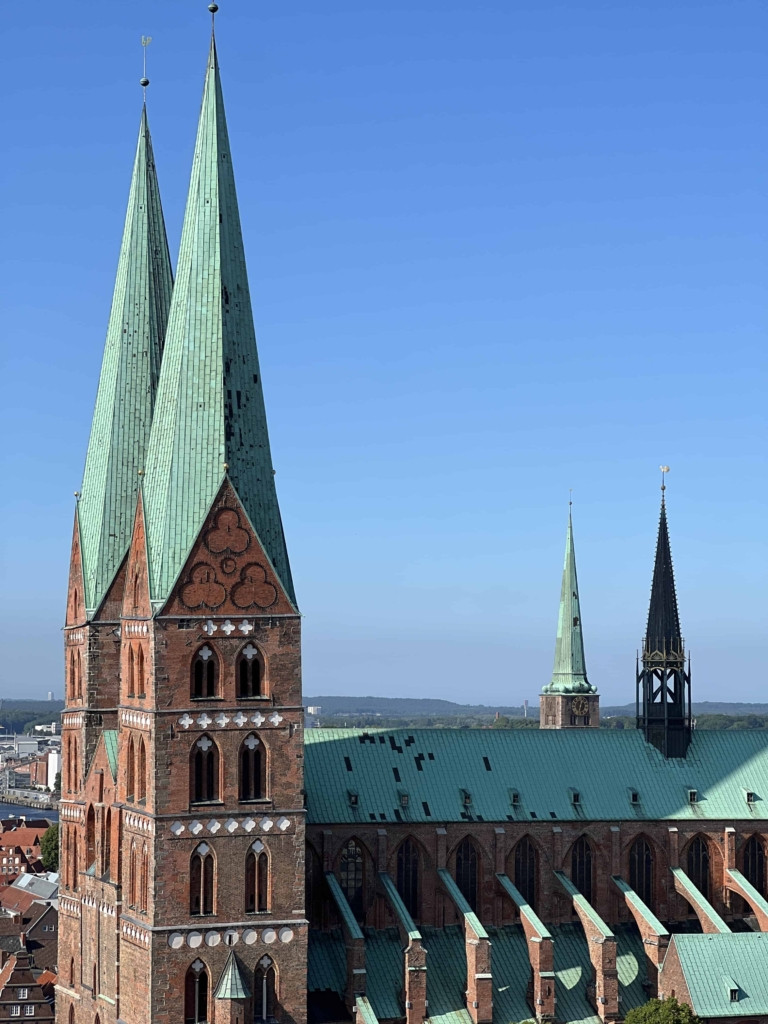 Gothic churches in Lubeck
Gothic churches in Lubeck
9. How Do You Get Around Lübeck?
You can get around Lübeck by walking, using local buses, renting a bicycle, or taking taxis, providing flexible transportation options for exploring the city. According to the Lübeck Tourist Information Center, these methods allow visitors to navigate the city efficiently.
Is Lübeck a walkable city?
Yes, Lübeck is a walkable city, especially the Altstadt (Old Town), where many attractions are located within walking distance, allowing you to explore its historic sites and charming streets on foot. The Old Town’s pedestrian-friendly layout makes it easy to stroll through its narrow streets, admire the architecture, and discover hidden courtyards. Walking is an ideal way to experience Lübeck.
How efficient are the local buses?
The local buses in Lübeck are efficient, providing comprehensive coverage of the city and connecting major attractions, residential areas, and transportation hubs, offering a convenient way to travel longer distances. The buses operate on a regular schedule, and the routes are well-organized, making it easy to navigate the city. Using local buses is a practical way to explore Lübeck.
Are bicycles available for rent?
Yes, bicycles are available for rent at various locations throughout Lübeck, offering a popular and eco-friendly way to explore the city’s bike-friendly streets and scenic routes. Many bike rental shops are located near the train station and in the Old Town. Renting a bicycle allows you to explore Lübeck at your own pace.
Where can you find taxis in Lübeck?
You can find taxis at designated taxi stands, near the train station, or by calling a local taxi service, offering a convenient and direct transportation option, especially for reaching specific destinations quickly. Taxi stands are located in central areas, such as the Market Square and near major hotels. Taxis provide a convenient and reliable transportation option.
10. What Travel Tips Should You Know Before Visiting Lübeck?
Travel tips to know before visiting Lübeck include learning basic German phrases, carrying cash for smaller establishments, checking opening hours for attractions, and being prepared for varying weather conditions, ensuring a smooth and enjoyable trip. According to TripAdvisor, these tips can enhance your travel experience.
What basic German phrases are useful?
Useful basic German phrases include “Hallo” (Hello), “Danke” (Thank you), “Bitte” (You’re welcome/Please), “Entschuldigung” (Excuse me), and “Sprechen Sie Englisch?” (Do you speak English?), facilitating basic communication with locals. These phrases can help you navigate daily interactions.
Is it necessary to carry cash?
Yes, it is advisable to carry cash, as some smaller establishments and markets may not accept credit cards, ensuring you can make purchases without any issues. While many larger stores and restaurants accept credit cards, smaller shops, cafes, and market vendors may prefer cash. Having cash on hand is a practical way.
How important is it to check opening hours?
Checking opening hours is crucial because many attractions, museums, and shops may have varying schedules depending on the season or day of the week, preventing any disappointment upon arrival. Opening hours can vary, so it’s always best to check in advance. This simple step.
What should you pack for Lübeck’s weather?
When packing for Lübeck’s weather, include layers of clothing, a waterproof jacket, and comfortable walking shoes, as the weather can be unpredictable, and you’ll likely be doing a lot of walking. The weather in Lübeck can be changeable, with periods of sunshine, rain, and wind. Dressing in layers allows you to adjust.
SIXT.VN is your partner for an unforgettable trip to Vietnam!
- Address: 260 Cau Giay, Hanoi, Vietnam
- Hotline/Whatsapp: +84 986 244 358
- Website: SIXT.VN
FAQ about Lübeck Tourism
- Is Lübeck worth visiting for a day trip?
Yes, Lübeck is worth visiting for a day trip, especially from nearby cities like Hamburg, offering a concentrated dose of history, culture, and marzipan delights. - What is the best time of year to visit Lübeck?
The best time to visit Lübeck is during the late spring or early autumn, when the weather is mild, and the crowds are smaller, allowing for a more relaxed experience. - Are there any free activities in Lübeck?
Yes, free activities in Lübeck include walking through the Old Town, visiting public parks, and admiring the architecture from the outside, providing budget-friendly exploration options. - How can I learn more about Lübeck’s Hanseatic history?
You can learn more about Lübeck’s Hanseatic history by visiting the European Hansemuseum, exploring the historic harbor, and taking a guided tour focused on the city’s medieval past. - What are some family-friendly activities in Lübeck?
Family-friendly activities in Lübeck include visiting the Lübeck Zoo, exploring the Marzipan Museum, and taking a boat tour on the Trave River, offering fun for all ages. - How accessible is Lübeck for travelers with disabilities?
Lübeck is relatively accessible for travelers with disabilities, with many attractions offering wheelchair access and public transportation providing accessible options, though some cobblestone streets may pose challenges. - Are there vegetarian or vegan dining options in Lübeck?
Yes, there are vegetarian and vegan dining options in Lübeck, with many restaurants offering plant-based dishes and catering to dietary restrictions. - What souvenirs should I buy in Lübeck?
Souvenirs to buy in Lübeck include marzipan, local crafts, and items related to Thomas Mann’s “Buddenbrooks,” providing tangible reminders of your visit. - How safe is Lübeck for tourists?
Lübeck is generally safe for tourists, with a low crime rate and a welcoming atmosphere, allowing visitors to explore with peace of mind. - Can SIXT.VN help me plan my trip to Lubeck?
While SIXT.VN specializes in travel within Vietnam, we can provide valuable travel tips and assistance for planning your overall trip, ensuring a well-rounded travel experience with connections to reliable local services in Lubeck.



